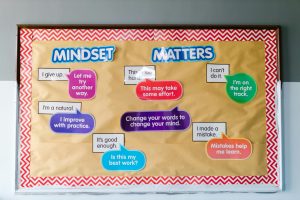From rigid schedules to flexible learning: a new rhythm for education
Education has always been rooted in traditional, rigid frameworks that prioritize standardized schedules and established routines. However, as the world continues to evolve and adapt to new challenges, the education system must also evolve to meet the needs of students in the 21st century. The concept of flexible learning has gained traction in recent years, heralding a new rhythm for education that better suits the needs and abilities of modern learners. In this article, we will delve into the benefits and implications of moving from rigid schedules to flexible learning, and how this shift can revolutionize the way we approach education. 
The Need for Change
The traditional education system was designed to prepare students for a workforce that valued conformity, discipline, and strict adherence to schedules. The emphasis on standardized testing and uniform curriculum often left little room for individuality and creativity. As a result, many students struggled to excel in this rigid system, leading to a high rate of disengagement and dropouts.
In today’s rapidly changing world, the traditional approach to education has become increasingly obsolete. With the rise of technology and globalization, the demands of the workforce have shifted, and employers are now looking for candidates with a diverse set of skills and the ability to think critically and creatively. The current education system is failing to meet these demands, and the need for change has become more urgent than ever.
Embracing Flexibility in Learning
Personalized Learning
One of the key benefits of flexible learning is personalized learning, which allows students to tailor their learning experience to their individual needs and interests. This approach recognizes that every student is unique, with different learning styles, abilities, and interests. By allowing students to choose the pace, method, and content of their education, they become more engaged and invested in their learning, leading to better outcomes.
Increased Flexibility
Flexible learning also offers increased flexibility in terms of time and location. Traditional learning is often limited to a set schedule and physical classroom, making it challenging for students with other commitments, such as work or family responsibilities. With flexible learning, students can access course materials and complete assignments at their convenience, making it easier for them to balance their personal and academic lives.
Encourages Critical Thinking
The rigid nature of traditional education often prioritizes rote learning and memorization over critical thinking and problem-solving skills. Flexible learning, on the other hand, encourages students to think outside the box and find creative solutions to real-world problems. By giving students the autonomy to choose their learning path and explore different concepts, they become more engaged and develop essential skills that are crucial in the modern workforce.
Challenges and Implications
Technological Barriers
One of the main challenges of implementing flexible learning is access to technology. In order for students to benefit from this approach, they need to have access to reliable internet and devices. However, not all students have equal access to these resources, creating a digital divide that can hinder their learning experience.
Teachers’ Adaptability
Flexible learning also requires a significant shift in mindset and teaching methods for educators. Moving away from traditional classrooms can be daunting for teachers who are used to a structured and controlled environment. They must learn to embrace technology, adopt new teaching methodologies, and adjust their role from the traditional “sage on the stage” to a facilitator and guide in the student’s learning journey.
In Conclusion
The education system must evolve to meet the evolving needs of students in the 21st century. Flexible learning offers a promising solution to address the flaws of traditional education, such as a lack of individualization, limited flexibility, and a focus on memorization instead of critical thinking. However, implementing this approach also comes with its challenges and implications that must be carefully considered. Ultimately, the move towards flexible learning is necessary to create a more inclusive, engaging, and effective education system for the future.










